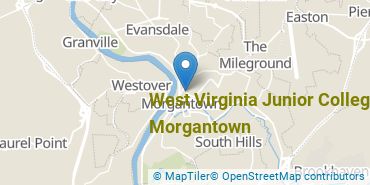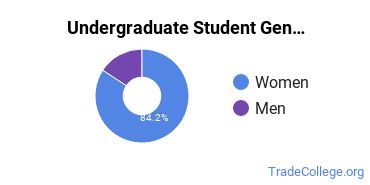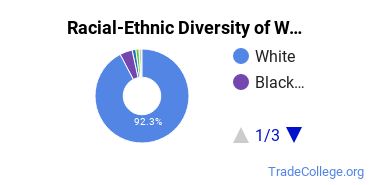West Virginia Junior College - Morgantown Trade Programs
West Virginia Junior College - Morgantown is a private for-profit institution situated in Morgantown, West Virginia. The location of the school is great for students who enjoy the amenities of city life.
Featured schools near , edit
Where Is West Virginia Junior College - Morgantown?

Contact details for WVJC Morgantown are given below.
| Contact Details | |
|---|---|
| Address: | 148 Willey St, Morgantown, WV 26505 |
| Phone: | 304-296-8282 |
| Website: | www.wvjc.edu |
Can I Afford WVJC Morgantown?
| In State | Out of State | |
|---|---|---|
| Tuition | $12,767 | $12,767 |
| Fees | $1,546 | $1,546 |
| Books and Supplies | $350 | $350 |
Student Loan Debt
While almost two-thirds of students nationwide take out loans to pay for college, the percentage may be quite different for the school you plan on attending. At WVJC Morgantown, approximately 85% of students took out student loans averaging $5,744 a year. That adds up to $22,976 over four years for those students.
West Virginia Junior College - Morgantown Undergraduate Student Diversity
Gender Diversity
Of the 622 full-time undergraduates at WVJC Morgantown, 14% are male and 86% are female.

Racial-Ethnic Diversity
The racial-ethnic breakdown of West Virginia Junior College - Morgantown students is as follows.

| Race/Ethnicity | Number of Grads |
|---|---|
| Asian | 3 |
| Black or African American | 28 |
| Hispanic or Latino | 4 |
| White | 575 |
| International Students | 2 |
| Other Races/Ethnicities | 10 |
West Virginia Junior College - Morgantown Trade School Concentrations
The table below shows the number of awards for each concentration.
| Major | Associate’s | Undergraduate Certificate | TOTAL |
|---|---|---|---|
| Medical/Clinical Assistant | 89 | 0 | 89 |
| Medical Insurance Coding Specialist/Coder | 42 | 0 | 42 |
| Medical Office Management/Administration | 30 | 0 | 30 |
| Pharmacy Technician/Assistant | 13 | 1 | 14 |
| Health Care Management | 5 | 0 | 5 |
| Medical Administrative/Executive Assistant & Medical Secretary | 0 | 4 | 4 |
| Medical Office Assistant/Specialist | 0 | 2 | 2 |
| Dental Assisting/Assistant | 0 | 0 | 0 |
| TOTAL | 179 | 7 | 186 |
References
*The racial-ethnic minorities count is calculated by taking the total number of students and subtracting white students, international students, and students whose race/ethnicity was unknown. This number is then divided by the total number of students at the school to obtain the racial-ethnic minorities percentage.
More about our data sources and methodologies.
Featured Schools
 Request Info
Request Info
|
Southern New Hampshire University You have goals. Southern New Hampshire University can help you get there. Whether you need a bachelor's degree to get into a career or want a master's degree to move up in your current career, SNHU has an online program for you. Find your degree from over 200 online programs. Learn More > |
